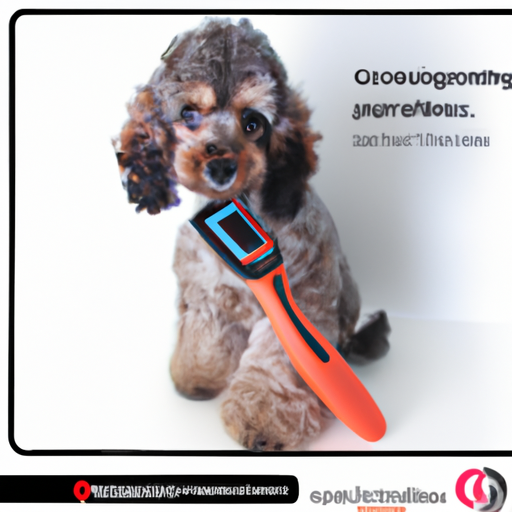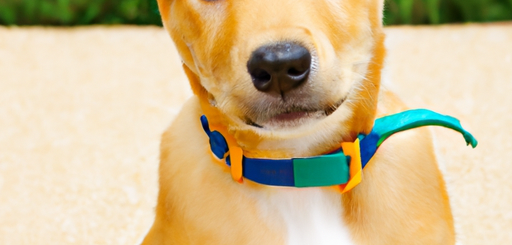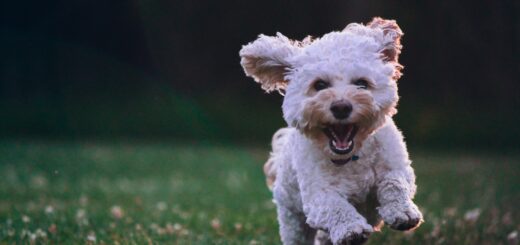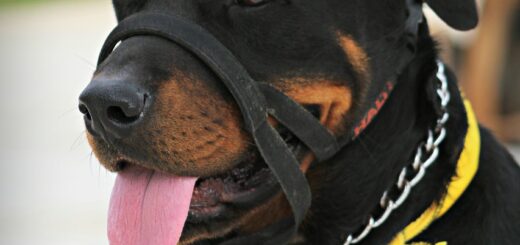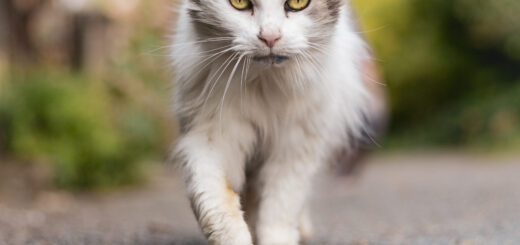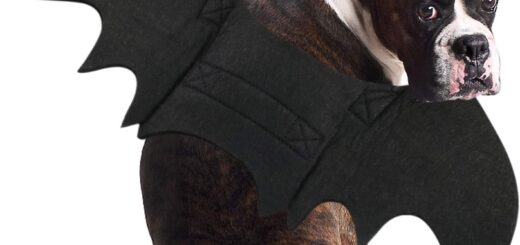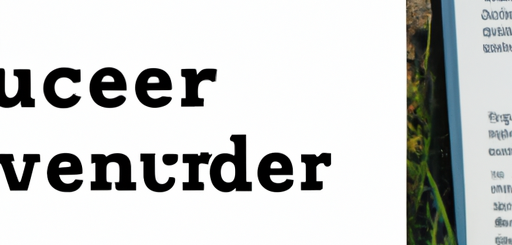Grooming Guide For Dogs: Brushing, Bathing, Nail Trimming, And Coat Maintenance
In this article, you will learn about grooming for dogs! Grooming means taking care of your dog’s fur, nails, and overall appearance. It’s important to keep your furry friend clean and healthy. You will find out how to brush your dog’s fur to keep it smooth and knot-free. Next, you’ll discover the best way to give your dog a bath, making sure they stay clean and fresh. We will also talk about trimming your dog’s nails, which is important for their comfort and safety. Lastly, you will learn about maintaining your dog’s coat, keeping it shiny and beautiful. By following this grooming guide, you’ll be able to keep your dog looking and feeling their best!
Brushing
Importance of regular brushing
Brushing your dog regularly is important for maintaining a healthy and clean coat. It helps to remove dirt, debris, and loose hairs, preventing them from matting and causing discomfort. Regular brushing also stimulates the skin and distributes natural oils, keeping the coat shiny and reducing the risk of skin issues. Additionally, brushing allows you to check for any abnormalities such as ticks, fleas, or skin irritations, ensuring your dog’s overall well-being.
Choosing the right brush for your dog’s coat type
There are different types of brushes available, and it’s essential to choose the right one for your dog’s coat type. Here are some common brush types:
- Bristle brush: Ideal for dogs with short, smooth coats.
- Slicker brush: Effective for removing mats and tangles in long-haired breeds.
- Undercoat rake: Perfect for double-coated breeds to remove loose fur.
- Deshedding tool: Helps reduce shedding in dogs with thick coats.
- Combs: Use a wide-tooth comb for detangling and a fine-tooth comb for removing debris and fleas.
Determining your dog’s coat type and consulting with a groomer or veterinarian can help you select the most suitable brush for regular brushing.
Steps for brushing your dog
- Choose a calm and quiet area for brushing.
- Gently introduce the brush to your dog, allowing them to sniff and get comfortable.
- Start brushing in the direction of hair growth, using long, smooth strokes.
- Pay attention to sensitive areas like the belly, armpits, and tail.
- Use treats or positive reinforcement to make brushing a positive experience.
- If you encounter mats or tangles, be patient and gentle while working through them. You can use a detangling spray or conditioner to ease the process.
- After brushing, reward your dog with praise, treats, or a play session.
Recommended brushing frequency for different breeds
The frequency of brushing depends on your dog’s breed and coat type. Here are some general guidelines:
- Short-haired dogs: Brush once a week to remove loose hair and maintain a sleek coat.
- Medium-haired dogs: Brush two to three times a week to prevent matting and remove loose fur.
- Long-haired dogs: Brush daily to prevent mats, tangles, and excessive shedding.
- Breeds with wiry or curly coats: Daily brushing or professional grooming may be required to prevent matting and maintain the coat’s texture.
Remember, regular brushing not only keeps your dog’s coat healthy but also strengthens the bond between you and your furry friend.
Bathing
Determining the ideal bathing schedule
Knowing how often to bathe your dog is essential for maintaining their cleanliness without stripping away the natural oils in their skin. The frequency of bathing depends on factors such as coat type, activity level, and outdoor exposure. Here are some general guidelines:
- Short-haired dogs: Bathing every 2-3 months or when they become visibly dirty is usually sufficient.
- Medium-haired dogs: Bathing every 4-6 weeks helps keep their coat clean and healthy.
- Long-haired dogs: Bathing every 4-8 weeks, depending on their coat’s condition, helps prevent matting and keeps them looking their best.
- Dogs with skin conditions: Consult your veterinarian for specific bathing recommendations.
Preparing the bathing area
Before bathing your dog, it’s important to create a safe and comfortable environment:
- Choose a warm indoor space or use a bathtub with lukewarm water.
- Gather all the necessary bathing supplies, such as dog shampoo, towels, a non-slip mat, and a brush.
- Place cotton balls in your dog’s ears to prevent water from entering.
- Have treats or a favorite toy ready for positive reinforcement.
Choosing the appropriate dog shampoo
Using the right shampoo is crucial for maintaining your dog’s coat and skin health. Here are some tips:
- Select a shampoo specifically formulated for dogs, as human shampoos can disrupt the pH balance of their skin.
- If your dog has sensitive skin or allergies, opt for hypoallergenic or medicated shampoos recommended by your veterinarian.
- Avoid shampoos containing harsh chemicals or artificial fragrances, as they can cause irritation.
Steps for bathing your dog
- Brush your dog’s coat before bathing to remove any loose fur or mats.
- Wet your dog’s coat thoroughly with lukewarm water, avoiding their face.
- Apply the dog shampoo and lather it gently, massaging it into their coat to reach their skin.
- Rinse thoroughly, making sure to remove all the shampoo, as leftover residue can cause skin irritations.
- Use a towel to dry your dog, gently patting them to absorb excess water. Avoid using a hairdryer as it can overheat and scare your dog.
- Take the opportunity to praise and reward your dog with treats or play after the bath, reinforcing positive behavior.
Drying and post-bath care
After bathing, it’s important to dry your dog properly to prevent skin issues:
- Use a towel to remove excess water, gently rubbing their coat.
- For long-haired breeds, you may need to use a brush while drying to prevent mats.
- If your dog has a thick coat, consider using a pet-specific blow dryer on a low heat setting, keeping it at a safe distance to prevent overheating.
- Check your dog’s ears, paws, and potty areas for any lingering moisture and dry them thoroughly.
By following these steps, you can ensure that your dog’s bath time is a positive and enjoyable experience for both of you.

This image is property of images.unsplash.com.
Nail Trimming
Importance of regular nail trimming
Regular nail trimming is essential for your dog’s comfort and overall well-being. Overgrown nails can cause discomfort, pain, and difficulty in walking, leading to joint issues or posture problems. Trimming your dog’s nails also prevents them from breaking or splitting, which can be painful and prone to infection.
Gathering the necessary tools
Before you start trimming your dog’s nails, gather the following tools:
- Dog nail clippers: Choose clippers that are the appropriate size for your dog. Opt for guillotine-style clippers or scissor clippers with a safety guard to avoid cutting too much.
- Styptic powder: In case you accidentally cut the quick (the sensitive part of the nail containing blood vessels), styptic powder helps stop bleeding.
- Treats or rewards: Use positive reinforcement during the nail trimming process.
Proper technique for nail trimming
- Find a quiet and well-lit area where both you and your dog can be comfortable. Consider having another person present to assist or offer treats and comfort.
- Hold your dog’s paw gently but firmly, ensuring they feel secure.
- Gradually introduce the clippers to your dog, touching their paws and nails with them, rewarding them with treats and praise for positive behavior.
- Identify the quick of the nail – a pinkish area within the nail. Avoid cutting into this sensitive area, as it can cause pain and bleeding.
- Trim a small portion of the nail at a time, ensuring you’re cutting above the quick. Take breaks if your dog shows signs of discomfort or anxiety.
- Use the styptic powder if you accidentally cut the quick, applying it with a cotton ball to stop bleeding.
- Remember to trim the dewclaws if your dog has them.
Managing your dog’s anxiety during nail trimming
For some dogs, nail trimming can be a stressful experience. Here are some tips for managing anxiety:
- Gradual desensitization: Start by touching your dog’s paws regularly without actually trimming the nails, gradually building up their comfort level.
- Positive association: Associate nail trimming with treats, praise, and rewards. Offer them frequently during the nail trimming process.
- Take breaks: If your dog becomes anxious, take breaks to allow them to calm down. Resume the process when they’re relaxed.
- Seek professional help: If your dog consistently exhibits extreme anxiety or aggression during nail trimming, consider consulting a professional dog groomer or a veterinarian for assistance.
Tips for nail maintenance and preventing overgrowth
To maintain your dog’s nails between trims and prevent overgrowth, consider the following tips:
- Regularly examine your dog’s nails, checking for signs of overgrowth or curling.
- Take your dog for walks on hard surfaces like pavement, as the friction can naturally file down their nails.
- Use a nail file or grinder to smoothen any rough edges after trimming, especially for dark-colored nails where identifying the quick may be challenging.
- Consider professional grooming services to ensure your dog’s nails are trimmed by experienced groomers if you’re uncomfortable doing it yourself.
Remember, patience, positive reinforcement, and consistency are key when it comes to nail trimming.
Coat Maintenance
Understanding your dog’s coat type
Different dog breeds have varying coat types, which require specific maintenance techniques. Here are some common coat types:
- Short coats: These coats are smooth and don’t require excessive grooming. Regular brushing helps remove loose hairs and keeps the coat shiny.
- Long coats: Long-haired breeds have flowing hair that requires regular brushing to prevent matting and tangles. Additional grooming techniques, such as trimming or shaping, may also be necessary.
- Double coats: Breeds with double coats have a dense undercoat and a longer topcoat. Regular brushing helps maintain the coat’s health, remove loose fur, and prevent matting.
- Curly or wiry coats: These breeds have distinct curly or wiry hair that requires regular brushing and specialized grooming techniques to prevent matting and maintain the coat’s texture.
Understanding your dog’s coat type allows you to choose the appropriate grooming techniques and products.
Different coat maintenance techniques
Maintaining your dog’s coat involves a combination of brushing, bathing, and other grooming techniques. Here’s a breakdown of different coat maintenance techniques:
- Brushing: Regular brushing removes loose hair, prevents matting, and stimulates the skin. Choose brushes suitable for your dog’s coat type (as discussed earlier) and establish a brushing routine based on their needs.
- Bathing: Bathing is essential to keep the coat clean and healthy. Follow the bathing guidelines mentioned earlier, using appropriate dog shampoos and conditioning treatments.
- Trimming and shaping: Some breeds require regular or occasional trimming to maintain their coat’s shape and avoid excessive fur growth. Seek professional grooming services or learn the techniques if appropriate for your dog’s breed.
- Detangling and removing mats: Long-haired breeds are prone to mats and tangles. Regular brushing, especially in areas prone to matting, helps prevent tangles from forming. Use a comb or a specialized detangling spray to ease the process.
- Dealing with shedding: Shedding is a natural process for most dogs. Regular brushing helps remove loose fur and minimizes shedding around the house. Consider deshedding tools or consult a professional groomer for specialized treatments.
- Coat-specific care: Some coats require additional care. For example, curly coats may benefit from using specialized shampoos and conditioners to enhance curl definition and prevent matting.
By incorporating these techniques into your dog’s grooming routine, you can keep their coat healthy, clean, and beautiful.
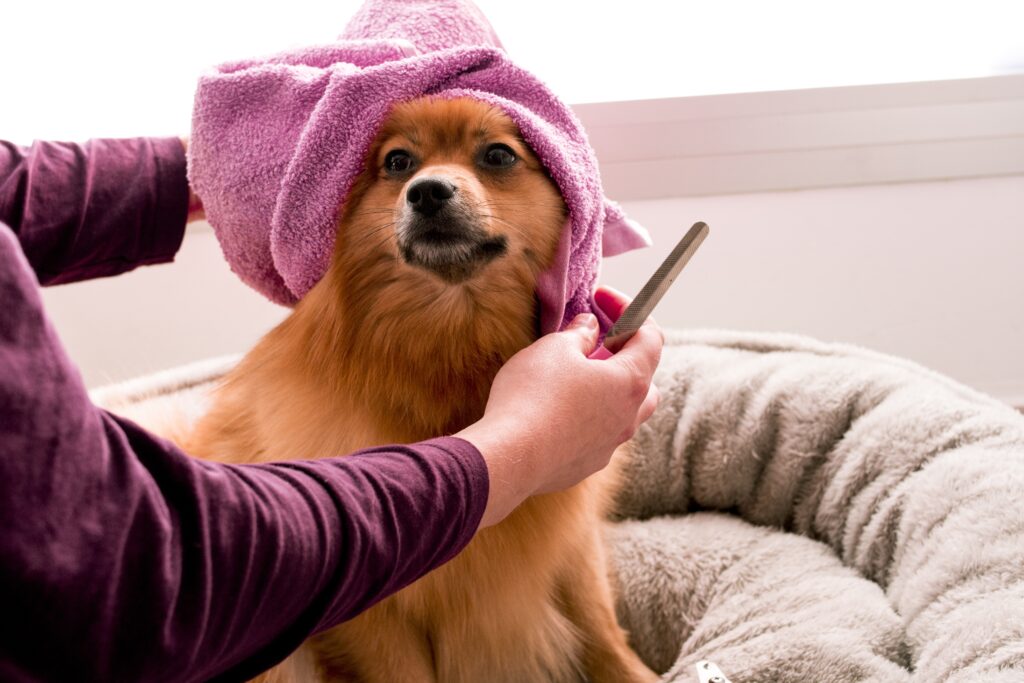
This image is property of images.unsplash.com.
Finding the Right Groomer
Benefits of professional grooming services
Professional grooming services offer several benefits for your dog’s overall well-being:
- Expertise: Professional groomers are experienced in handling different coat types, breeds, and grooming techniques.
- Equipment and safety: Grooming salons are equipped with necessary tools and supplies to ensure your dog’s safety and comfort during grooming.
- Specialized treatments: Groomers may offer additional services such as nail trimming, teeth cleaning, and specific breed-specific styling.
- Preventive care: Groomers can detect early signs of skin issues, parasites, or other health concerns, directing you to seek veterinary care if needed.
- Time-saving: Professional grooming services save you time and effort compared to maintaining your dog’s grooming needs independently.
Researching and selecting a reputable groomer
When selecting a groomer, it’s important to do research and choose a reputable professional. Here are some steps to follow:
- Ask for recommendations: Seek recommendations from friends, family, or your veterinarian for reliable groomers in your area.
- Read reviews: Look for online reviews or testimonials from other dog owners to gauge the overall satisfaction and quality of service.
- Visit the salon: Take a tour of the grooming salon to check for cleanliness, proper ventilation, and the overall treatment of the dogs being groomed.
- Credentials and certifications: Inquire about the groomer’s training, certifications, or participation in professional grooming associations.
- Communication and rapport: Engage in a conversation with the groomer to ensure they understand your dog’s specific needs and grooming preferences.
Communicating your expectations to the groomer
Effective communication with the groomer helps ensure your dog receives the desired grooming treatment. Here are some points to discuss:
- Grooming requirements: Clearly communicate the specific grooming requirements for your dog’s coat type or breed, such as brushing techniques, trimming preferences, and any specific treatments.
- Health concerns: Inform the groomer about any existing health conditions, allergies, or sensitivities your dog may have, ensuring the use of appropriate products and techniques.
- Behavioral concerns: Discuss any behavioral issues, anxiety triggers, or past grooming experiences that may impact your dog’s behavior during the grooming process.
Maintaining a positive relationship with the groomer
Building a positive relationship with your dog’s groomer is beneficial for consistent and satisfactory grooming experiences:
- Regular appointments: Schedule regular grooming appointments to maintain your dog’s coat and prevent excessive matting or overgrowth.
- Feedback and communication: Provide feedback to the groomer after each grooming session, discussing any concerns or areas for improvement.
- Positive reinforcement: Praise and reward your dog after grooming sessions, helping them associate grooming with positive experiences.
- Regular check-ins: Stay in touch with the groomer regarding any changes in your dog’s grooming needs or health concerns.
By finding the right groomer and maintaining clear communication, you can ensure your dog receives high-quality grooming services.
Ear Cleaning
Understanding the importance of regular ear cleaning
Regular ear cleaning is crucial for maintaining your dog’s ear health. Here’s why:
- Preventing infections: Cleaning removes dirt, wax, and debris, reducing the risk of infection caused by bacterial or yeast overgrowth.
- Detecting issues early: Regular cleaning allows you to observe any abnormalities like redness, discharge, or foul odor, helping you identify potential ear problems promptly.
- Reducing discomfort: Dogs with floppy ears or hairy ear canals are more prone to ear infections. Cleaning helps alleviate discomfort and prevent potential pain.
Selecting appropriate ear cleaning products
When choosing ear cleaning products, you should prioritize safety and effectiveness:
- Ear cleaning solution: Opt for a veterinarian-recommended ear cleaning solution specifically formulated for dogs. Avoid using alcohol-based or strong cleaning solutions, as they can irritate the ears.
- Cotton balls or pads: Use soft, lint-free cotton balls or pads for gentle cleaning.
Proper technique for ear cleaning
Follow these steps for safe and effective ear cleaning:
- Choose a quiet and comfortable area for ear cleaning where your dog feels relaxed.
- Gently lift your dog’s ear flap, exposing the ear canal.
- Place a small amount of ear cleaning solution onto a cotton ball or pad. Avoid inserting the cotton ball deep into the ear canal.
- Gently wipe the visible parts of the ear canal and the inner surface of the ear flap. Do not push the cotton ball too far into the ear.
- Repeat the process with a fresh cotton ball or pad until it comes out clean.
- After cleaning, praise and reward your dog with treats or play to reinforce positive behavior.
Signs of ear problems and when to consult a veterinarian
While regular cleaning helps prevent ear problems, it’s important to be aware of signs that may indicate an underlying issue. Contact your veterinarian if your dog exhibits any of the following symptoms:
- Excessive scratching or rubbing of the ears
- Redness, swelling, or discharge from the ears
- Strong odor coming from the ears
- Head shaking or tilting
- Pain or sensitivity when handling the ears
Your veterinarian can diagnose and treat any ear problems, providing appropriate guidance for ongoing care.

This image is property of images.unsplash.com.
Eye Care
Keeping your dog’s eyes clean and healthy
Proper eye care is essential in maintaining your dog’s overall health and happiness. Here are some tips for keeping your dog’s eyes clean and healthy:
- Regular observation: Observe your dog’s eyes daily for any signs of redness, discharge, or irritation.
- Gentle cleaning: Use a veterinarian-recommended eye wash or sterile saline solution to wipe away any discharge or debris gently.
- Avoid harsh substances: Do not use soaps, shampoos, or human eye drops in your dog’s eyes, as these can cause irritation.
- Regular grooming: Keep the hair around your dog’s eyes trimmed to prevent it from irritating or obstructing their vision.
- Protect from irritants: When outdoors, shield your dog’s eyes from dust, pollen, and other irritants by using dog-specific goggles or keeping them away from environments with excessive irritants.
Choosing safe and gentle eye cleaning solutions
When selecting an eye cleaning solution, consider the following:
- Veterinarian-recommended: Consult your veterinarian for recommendations on safe and effective eye cleaning solutions.
- Sterile saline solution: Sterile saline solution is a gentle option for removing debris and can be used for regular eye cleaning.
- Avoid harsh chemicals: Do not use any solutions with harsh chemicals or irritants that can cause discomfort to your dog’s eyes.
Step-by-step process for cleaning your dog’s eyes
Follow these steps for cleaning your dog’s eyes:
- Find a calm and well-lit area to conduct the eye cleaning procedure.
- Soak a clean cotton ball or pad in a veterinarian-recommended eye wash or sterile saline solution.
- Gently hold your dog’s head and tilt it back slightly.
- Wipe the corners of your dog’s eyes outward with the moistened cotton ball or pad, removing any discharge or debris.
- Use a fresh cotton ball or pad for each eye, ensuring you do not transfer any potential infection between the eyes.
- Be cautious not to touch the eye directly or use excessive force while wiping.
If you notice any changes or signs of eye irritation persisting after cleaning, consult your veterinarian for a thorough examination.
Recognizing common eye issues and when to seek veterinary care
Certain eye issues may require prompt veterinary attention. Contact your veterinarian if you notice any of the following:
- Persistent redness, swelling, or discharge from the eyes
- Cloudiness or blurriness in the eyes
- Sensitivity to light
- Frequent squinting or pawing at the eyes
- Changes in the appearance or color of the iris
- Change in vision or difficulty seeing
Your veterinarian will be able to diagnose and treat any eye problems your dog may be experiencing, ensuring their eye health is properly managed.
Dental Hygiene
Understanding the importance of dental care for dogs
Maintaining your dog’s dental hygiene is crucial for their overall health and well-being. Proper dental care prevents dental diseases, bad breath, and discomfort. Here are some reasons why dental hygiene is essential:
- Periodontal disease prevention: Regular dental care helps prevent periodontal disease, which can lead to tooth loss, pain, and even systemic health issues affecting the heart, liver, and kidneys.
- Fresh breath: Good dental hygiene reduces the chances of bad breath caused by oral bacteria.
- Increased comfort: Healthy teeth and gums ensure your dog can eat and chew comfortably.
Selecting appropriate dental products for your dog
Choosing the right dental products is important for effective dental care. Here are some options:
- Dog toothbrush: Select a toothbrush specifically designed for dogs. Alternatively, you can use a finger toothbrush or a finger glove brush that fits over your finger.
- Dog toothpaste: Use a toothpaste specially formulated for dogs. Avoid using human toothpaste, as it can be toxic for dogs.
- Dental chews and toys: Dental chews and toys can help remove plaque and tartar buildup, providing additional support for dental health. Look for products approved by veterinary dental associations.
Brushing your dog’s teeth
Follow these steps to brush your dog’s teeth effectively:
- Introduce your dog to the toothbrush and toothpaste gradually. Let them sniff and taste the toothpaste to create a positive association.
- Lift your dog’s lip gently and start brushing in small circular motions, focusing on the gum line.
- Be patient and proceed at your dog’s pace, gradually increasing the time spent brushing.
- Pay attention to the back teeth, as they are more prone to plaque accumulation.
- Offer praise, rewards, or playtime after each successful brushing session to reinforce positive behavior.
Start with short brushing sessions and gradually build up to longer sessions as your dog becomes more comfortable with the process. Aim for daily brushing, but even a few times a week can significantly benefit your dog’s dental health.
Alternative dental care options
In addition to brushing, there are alternative dental care options you can incorporate into your dog’s routine:
- Dental rinses or water additives: These products can be added to your dog’s drinking water to help reduce plaque and promote oral health. Consult your veterinarian for recommendations.
- Dental treats and chews: Look for dental treats or chews that are specifically designed to promote dental health. They can help remove plaque and tartar buildup while providing a tasty reward.
- Professional dental cleanings: Professional dental cleanings performed by veterinarians are essential for deep cleaning and addressing any dental issues. Consult your veterinarian for the recommended frequency of professional cleanings based on your dog’s needs.
Remember, regular dental care is key to preventing dental diseases and promoting your dog’s overall health.
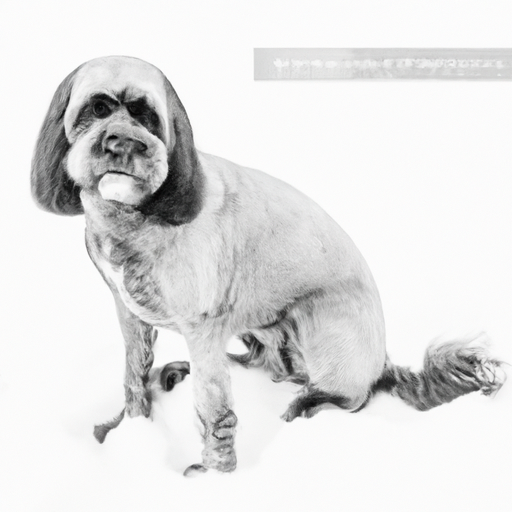
Dealing with Skin Issues
Common skin problems in dogs
Skin issues can commonly affect dogs, leading to discomfort and irritations. Here are some common skin problems:
- Allergies: Dogs can develop allergies to certain foods, environmental factors, or parasites, causing skin irritations, itching, and redness.
- Dry skin: Dry skin can lead to itchiness, flaking, and overall discomfort for your dog.
- Hot spots: Hot spots are areas of localized inflamed skin, which can be caused by allergies, insect bites, or excessive licking.
- Parasites: Fleas, ticks, and mites can cause skin irritations, itching, and hair loss.
Identifying the cause of skin issues
Identifying the underlying cause of your dog’s skin issues is essential for effective treatment. Here are some steps to follow:
- Consult your veterinarian: If your dog exhibits signs of skin issues, consult your veterinarian for a thorough examination and diagnosis.
- Allergy testing: If allergies are suspected, your veterinarian may recommend allergy testing to identify the specific allergens.
- Parasite control: Ensure your dog is on a regular parasite prevention program to protect them from fleas, ticks, and other parasites.
Treating and managing skin conditions
Treatment and management of skin conditions depend on the specific issue and underlying cause. Here are some common approaches:
- Medications: Your veterinarian may prescribe medications such as antihistamines, corticosteroids, or antibiotics to address allergies, inflammation, or infection.
- Topical treatments: Topical ointments or sprays can help soothe and heal irritated skin.
- Regular bathing: Regular bathing with appropriate medicated shampoos can help alleviate certain skin conditions and keep the skin clean.
- Dietary changes: If food allergies are suspected, your veterinarian may recommend a change in diet, such as a hypoallergenic or limited ingredient diet.
- Environmental management: Minimize exposure to potential allergens or irritants in your dog’s environment, such as certain plants, chemicals, or allergenic surfaces.
- Grooming adjustments: Modify your grooming routine based on your dog’s specific skin condition, such as using specialized shampoos or avoiding excessive brushing in sensitive areas.
Always follow your veterinarian’s recommendations and prescriptions for the most effective treatment and management of your dog’s skin issues.
When to involve a veterinarian
If your dog’s skin issues persist, worsen, or are accompanied by other concerning symptoms, it’s crucial to involve a veterinarian. Seek veterinary care if you notice:
- Severe itching or discomfort
- Open sores or wounds
- Excessive hair loss or bald patches
- Foul odor from the skin
- Changes in behavior or appetite
Your veterinarian will conduct a thorough examination, perform any necessary tests, and recommend appropriate treatments for your dog’s specific skin condition.
Special Considerations for Puppies
Introducing grooming routines to puppies
Introducing grooming routines to puppies is important to ensure they grow up comfortable with grooming procedures. Here are some tips for gentle introductions:
- Start early: Begin grooming sessions when the puppy is young, allowing them to become accustomed to being handled and touched.
- Short and positive sessions: Keep grooming sessions short, gradually increasing the duration as your puppy becomes more comfortable. Offer plenty of praise, treats, or playtime as positive reinforcement.
- Gradual exposure: Introduce them to the grooming equipment one at a time, allowing them to sniff and become familiar with each tool.
Gentle grooming techniques for puppies
When grooming puppies, it’s essential to use gentle techniques to ensure their comfort and safety. Here are some tips:
- Use a soft brush: Choose brushes with soft bristles suitable for puppies’ delicate skin.
- Light pressure: Apply light pressure while brushing or bathing to avoid causing discomfort or anxiety.
- Gentle handling: Be patient and gentle while handling the puppy, ensuring they feel secure throughout the grooming process.
- Frequent breaks: Take breaks during grooming sessions to give your puppy time to relax and process the experience.
Gradual introduction to grooming equipment
Introduce grooming equipment gradually to help your puppy adjust to the different tools. Here’s how:
- Let them sniff: Allow your puppy to sniff and investigate each tool, associating them with positive experiences and rewards.
- Positive reinforcement: Offer treats, praise, or playtime whenever your puppy approaches or shows curiosity towards the grooming equipment.
- Gradual touch: Gradually touch your puppy with the grooming tools, starting with gentle strokes and minimal contact. Build up to actual brushing or bathing as your puppy becomes more comfortable.
Soothing and comforting anxious puppies during grooming
Some puppies may exhibit anxiety or fear during grooming. Here are some techniques to soothe and comfort them:
- Calm environment: Choose a quiet, familiar environment without distractions for grooming sessions.
- Familiar scents: Use familiar scents, such as blankets or toys, to provide a sense of comfort and security.
- Positive association: Associate grooming with positive experiences by offering treats, praise, or rewards throughout the process.
- Social support: Have another family member or friend present to offer soothing verbal cues and gentle petting to help calm the puppy.
By gradually introducing grooming routines and ensuring a positive and comforting experience, you can help your puppy grow up without fear or anxiety towards grooming.
In conclusion, grooming plays a crucial role in maintaining your dog’s overall health and well-being. Regular brushing, bathing, nail trimming, and coat maintenance are essential for keeping your furry friend clean, comfortable, and happy. By understanding your dog’s specific needs, choosing appropriate grooming techniques and products, and seeking professional help when needed, you can ensure that your dog’s grooming routine is a positive and enjoyable experience for both of you. Remember to be patient, use positive reinforcement, and prioritize your dog’s comfort throughout the grooming process.
